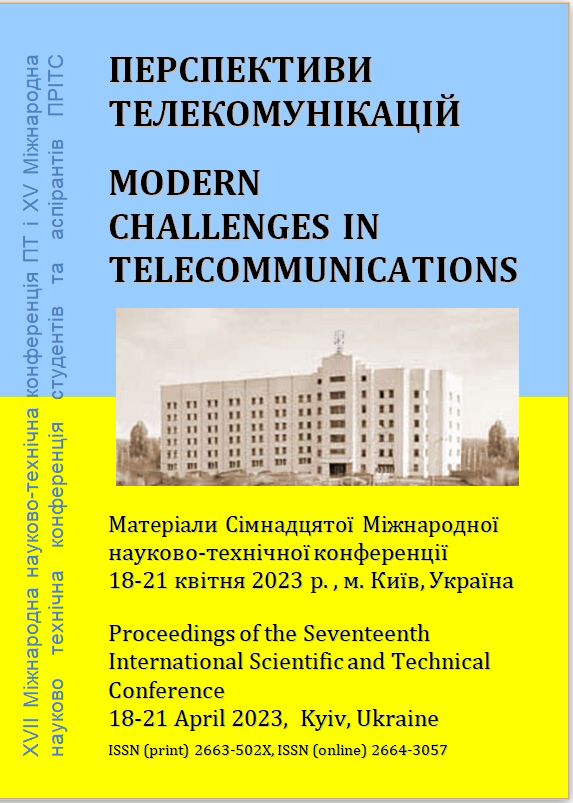ОГЛЯД СУЧАСНИХ ТЕХНОЛОГІЙ ЦИФРОВОГО ТЕЛЕВІЗІЙНОГО МОВЛЕННЯ
Анотація
Сьогодні цифрове телевізійне мовлення є однією з основних технологій у сфері телекомунікацій та масової комунікації. Цифрове телебачення забезпечує кращу якість зображення та звуку, більшу кількість каналів і можливість передачі контенту високої чіткості (HD) і надвисокої чіткості (4K). В роботі наведено огляд деяких сучасних технологій цифрового телевізійного мовлення.Посилання
Гельгор А.Л., Попов Е.А.Система цифрового телевизионного вещания стандарта DVB-T: Учеб. пособие. – СПб.: Изд-во Политехн. ун-та, 2010. – 207 с.
Digital Television Satellite, Cable, Terrestrial, IPTV, Mobile TV in the DVB Framework. Third Edition.
Стандарт DVB-S. Система цифрового ТВ вещания опис [Електроний ресурс]: база даних- Режим доступу: http://www.konturm.ru/tech.php?id=dvbs
IPTV vs. OTT [Електронний ресурс]. Режим доступу до ресурсу: https://nettech.ua/news/iptv-vs-ott-sdelayte-svoy-vibor
[Електронний ресурс]. Режим доступу: https://deps.ua/ua/knowegable-base/articles/9689.html
Палагін В. В. Основи телебачення : посібник для студентів напряму підготовки 6.050901 "Радіотехніка" [Електронний ресурс] / Авт.-укл. В. В. Палагін, А. В. Гончаров ; за ред. Ю. Г. Леги ; М-во освіти і науки України, Черкас. держ. технол. ун-т. – Черкаси : ЧДТУ, 2010. – 144 с.
##submission.downloads##
Опубліковано
Як цитувати
Номер
Розділ
Ліцензія

Ця робота ліцензується відповідно до Creative Commons Attribution 4.0 International License.
Authors who submit to this conference agree to the following terms:a) Authors retain copyright over their work, while allowing the conference to place this unpublished work under a Creative Commons Attribution License, which allows others to freely access, use, and share the work, with an acknowledgement of the work's authorship and its initial presentation at this conference.
b) Authors are able to waive the terms of the CC license and enter into separate, additional contractual arrangements for the non-exclusive distribution and subsequent publication of this work (e.g., publish a revised version in a journal, post it to an institutional repository or publish it in a book), with an acknowledgement of its initial presentation at this conference.
c) In addition, authors are encouraged to post and share their work online (e.g., in institutional repositories or on their website) at any point before and after the conference.

